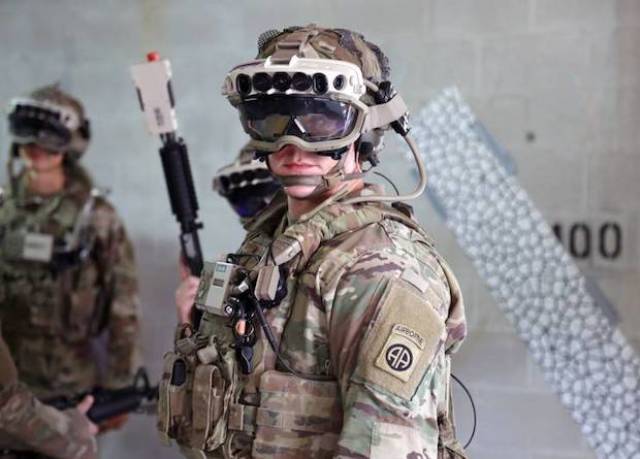The US Army has postponed military operational tests of Microsoft augmented reality helmets due to a problem with their wide viewing angle. According to Military Times, the wide panels stretch and distort the image a little. In addition, the effect of a mosquito net was found in some helmets — when lines separating pixels are visible when viewed.
Augmented reality helmets and glasses superimpose the image of virtual objects on the real world. Usually these devices use translucent panels that reflect the image from the projector into the user's eyes, or laser emitters that project it directly onto the retina.
In 2018, Microsoft signed a contract with the US army for the supply of one hundred thousand augmented reality helmets — a military version of its HoloLens 2 . This helmet has a view about twice as large as the first HoloLens (they had it at 30 × 17 degrees). HoloLens 2 also received a laser projection screen, sensors for recognizing and tracking real objects, as well as a more powerful processor.
The US Army has postponed the military operational tests of augmented reality helmets scheduled for this fall until May next year. The reason was a number of technical problems faced by the military.
Firstly, the wide viewing angle - about 80 degrees - stretches and distorts the image. According to Major General Anthony Potts, you can see through the helmet like through a stretched balloon. The distortion is insignificant, but the human eye is constantly trying to adapt to it, and this causes discomfort.
The US military thinks that it is possible to solve this problem by reducing the display field to about 70 degrees. Considering that most army night vision devices have it reaching 40 degrees at best, this will still be a significant result.
Secondly, in some helmets, the effect of a mosquito net is manifested. It can be seen on the images of a digital projector or on a conventional display at close range - thin dark lines separating pixels.
Now the Army Night Vision laboratory and Microsoft are working on these two issues. In January or February, the military will assess whether they have been solved. This pushes back not only the beginning of military operational tests, but also the deadline for the receipt of helmets for armament. Now it is planned that the first division will be equipped with them in September next year.
Earlier we wrote about the Israeli system for ARCAS submachine guns, which shows soldiers information about the combat situation, including sources of fire and ammunition levels, in augmented reality. It transmits this data to an electron-optical sight or to an eyepiece mounted on a fighter's helmet.
Vasilisa Chernyavtseva

